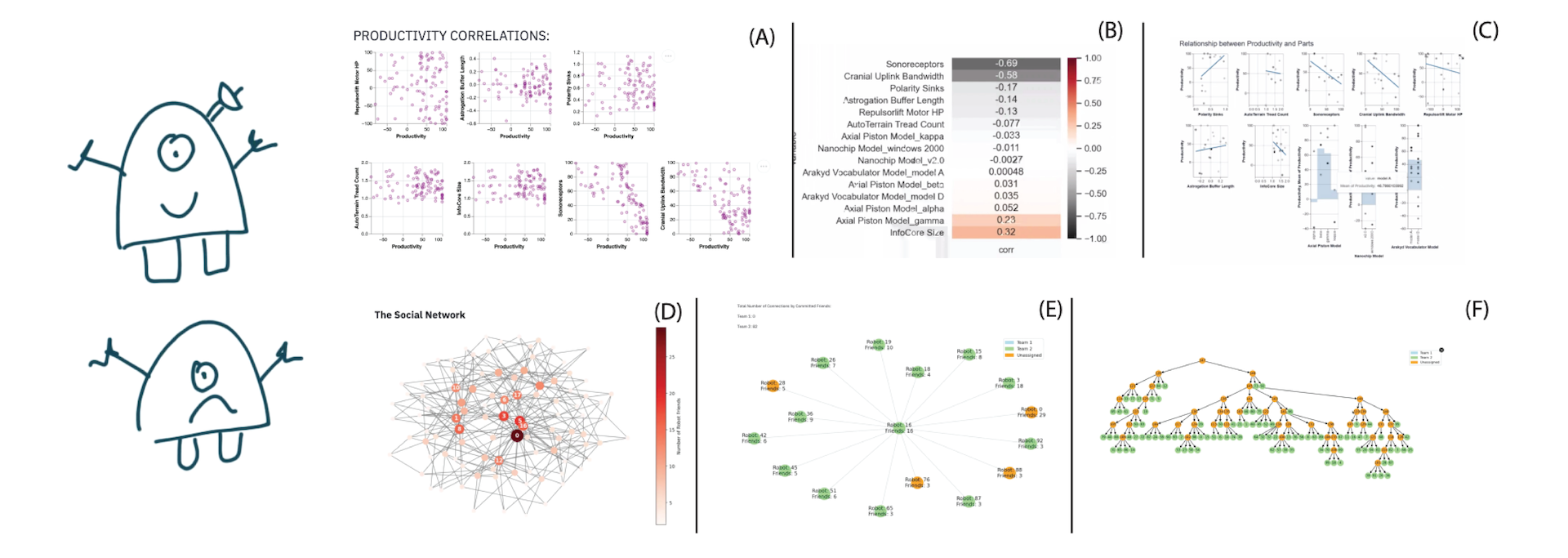Roboviz: A Game-Centered Project for Information Visualization Education
Eytan Adar, Elsie Lee-Robbins
View presentation:2022-10-19T16:33:00ZGMT-0600Change your timezone on the schedule page
2022-10-19T16:33:00Z

Prerecorded Talk
The live footage of the talk, including the Q&A, can be viewed on the session page, Visualization Opportunities.
Fast forward
Abstract
Due to their pedagogical advantages, large final projects in information visualization courses have become standard practice. Students take on a client--real or simulated--a dataset, and a vague set of goals to create a complete visualization or visual analytics product. Unfortunately, many projects suffer from ambiguous goals, over or under-constrained client expectations, and data constraints that have students spending their time on non-visualization problems (e.g., data cleaning). These are important skills, but are often secondary course objectives, and unforeseen problems can majorly hinder students. We created an alternative for our information visualization course: Roboviz, a real-time game for students to play by building a visualization-focused interface. By designing the game mechanics around four different data types, the project allows students to create a wide array of interactive visualizations. Student teams play against their classmates with the objective to collect the most (good) robots. The flexibility of the strategies encourages variability, a range of approaches, and solving wicked design constraints. We describe the construction of this game and report on student projects over two years. We further show how the game mechanics can be extended or adapted to other game-based projects.